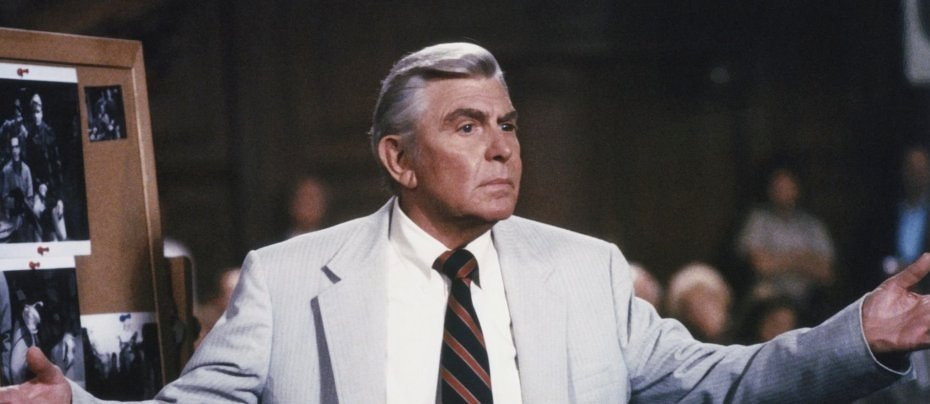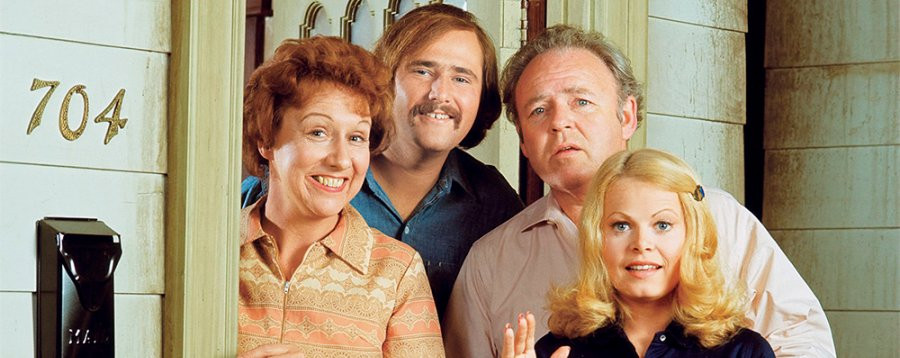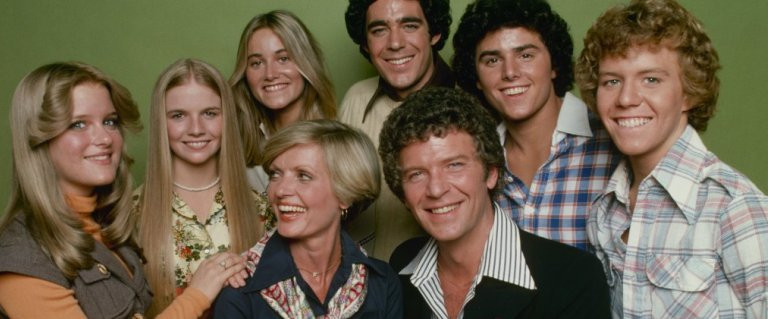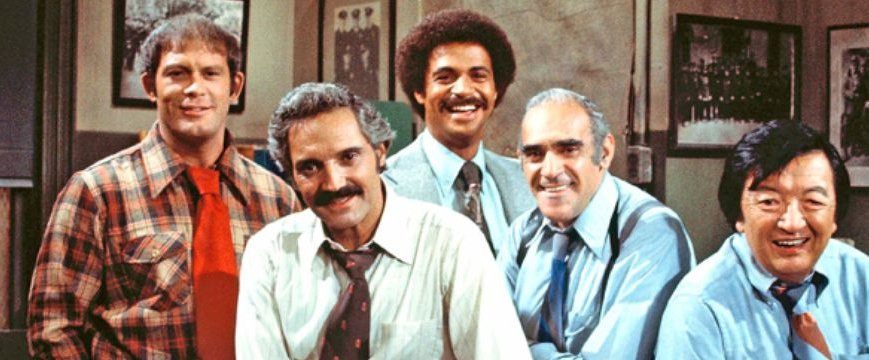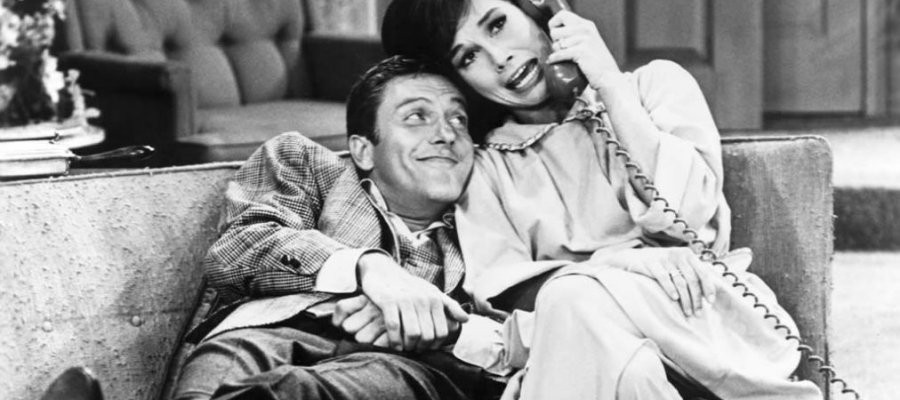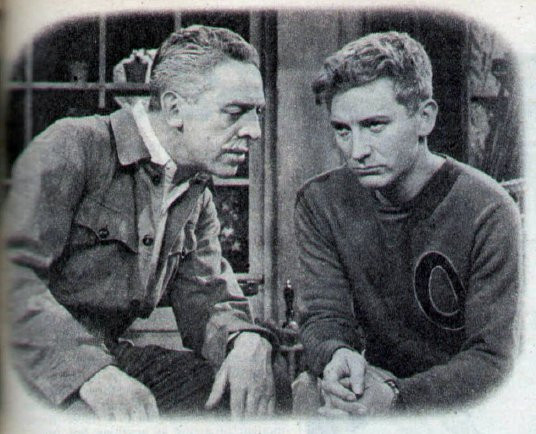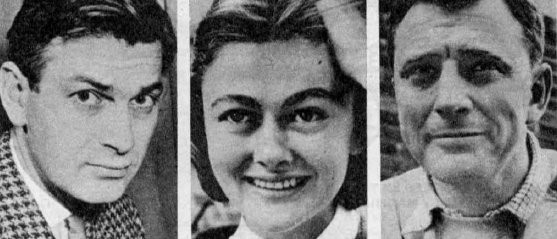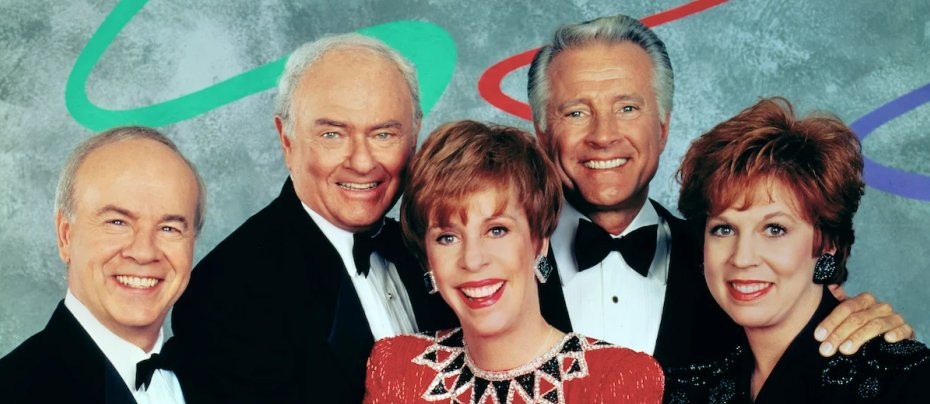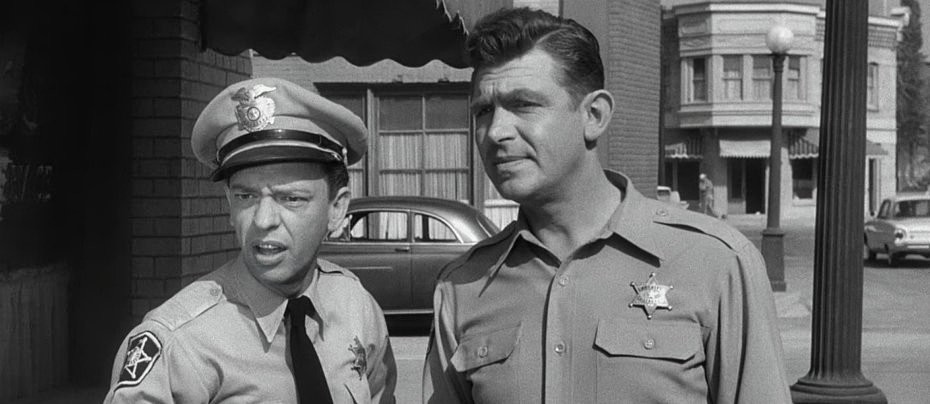
The Andy Griffith Show
1960 - United StatesAn excellent example of a show tailored to the unique talents of its star
Review by Mike Spadoni
Few American sitcoms had the staying power and fan base of The Andy Griffith Show. During its original run, it never left the top ten, and it was just one of four US shows (I Love Lucy, Seinfeld and Friends being the others) that left the airwaves while still on top of the ratings.
One reason for The Andy Griffith Show continued popularity is its timeless and affectionate depiction of American small-town life where traditional values are upheld and people knew and cared for each other. The sleepy and fictional town of Mayberry, North Carolina (population 1200) was the basis for the adventures (or non-adventures, if you will) of widowed Sheriff Andy Taylor (Griffith); his bumbling deputy Barney Fife (Don Knotts); Andy's young son Opie (Ronnie Howard) and Aunt Bee (Frances Bavier), the woman who takes care of Andy and Opie and occasionally brings a hot meal to those locked up in the city's jail. Add some of the most unusual townsfolk around, gentle humour and a warm father-son relationship between Andy and Opie, and you have the makings of a true television classic.
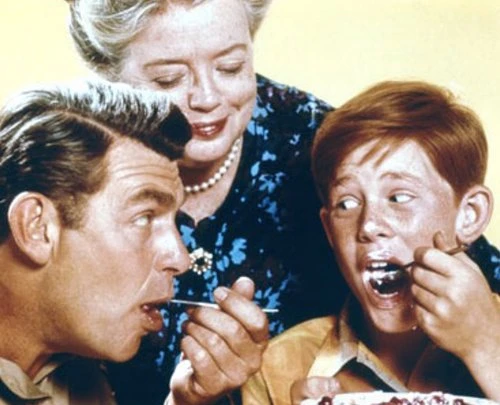
Andy Griffith was born June 1926 in the town of Mount Airy, North Carolina--the inspiration for Mayberry. He began his show business career as a comedian. In 1954 he had a hit comedy record called What It Was, Was Football. About the same time, he was picked to play Will Stockdale, a country boy who shakes up the military in No Time for Sergeants, the Broadway play which was later performed on television and made into a movie. (Griffith's best film was probably 1957's A Face in the Crowd, where he played the slick and devious television personality Lonesome Rhodes, as far from Andy Taylor as you could get).
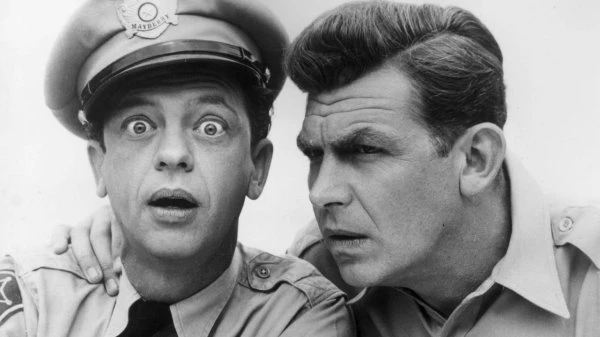
Taylor was actually born on the February 15th, 1960 episode of the popular Danny Thomas Show. Griffith (as Andy Taylor) arrests Danny Williams (Thomas) who speeds through the small town. Griffith's appearance drew high ratings and good reviews, leading Thomas and his show's co-producer Sheldon Leonard to create a sitcom featuring Griffith's character. CBS agreed to air the new series, and with Thomas' sponsor (General Foods) on board, The Andy Griffith Show premiered on October 3rd, 1960. Comic Don Knotts (who appeared with Griffith in the movie version of "Sergeants") asked if he could be written in as a character. He was--as Andy's cousin and deputy Barney Fife, a highly-strung man with a tendency for incompetence. (Fortunately, Mayberry was not a high-crime town.) But Barney was not the only oddball in Mayberry. Others in the case included slow-talking barber Floyd Lawson (Howard McNear); town drunk Otis Campbell (Hal Smith); Andy's girlfriend Ellie Walker (Elinor Donahue, who was followed by several more gal pals for Andy); and in the third season, town mechanic Gomer Pyle (Jim Nabors).
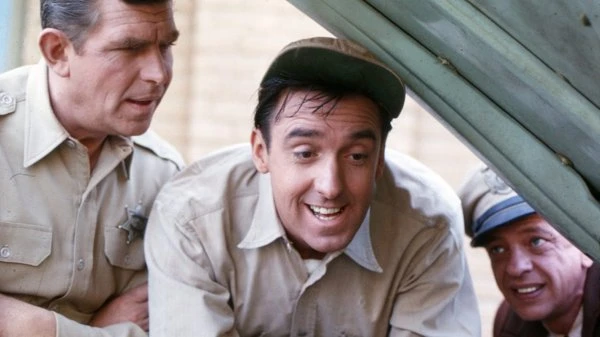
The situations were not broad slapstick, but mostly minor misunderstandings that were resolved by the end of the show. And the show's languid pace was a change from most fast-moving sitcoms. In the fall of 1964, Gomer Pyle was given his own show, Gomer Pyle USMC. The fall of 1965 brought two major changes to "Andy Griffith." The show was broadcast in colour for the first time; and after five seasons, Don Knotts decided to leave the series to pursue a film career. (Originally, Griffith said he would end the show by '65, but CBS made an offer he couldn't refuse.) Although Knotts was no longer a regular, he guest-starred in a few later episodes. Knotts won a total of five Emmy awards as Barney Fife, and Bavier picked up an Emmy for her role as Aunt Bee.
Although the show continued to draw big audiences, many hard-core fans felt the colour/post Barney episodes paled in quality to the earlier black and white shows. Griffith was also itching to try his luck in movies and decided to quit just as "Andy Griffith" became the top-rated series on US television. By this time, he had been dating Opie's teacher, Helen Crump (Aneta Corsaut) for several years; his decision to marry her provided Griffith with an exit from the show. In the last few episodes of the 1967-68 season, Andy helps local farmer Sam Jones (Ken Berry) get elected to the Mayberry Town Council.
On September 23rd, 1968, The Andy Griffith Show officially became Mayberry RFD, and was launched with Andy and Helen tying the knot and leaving Mayberry (taking Opie with them). The saga of Mayberry continued to draw viewers; "RFD" was nearly as popular as "Andy Griffith". But it was also drawing older, poorer audiences, and new CBS executives decided to clean house in the spring of 1971, kicking out just about all the network's rural and older-skewing series. Mayberry RFD was among the cancellations.
Through the 1970's and 80's, reruns of "Andy Griffith" kept playing to new generations of audiences. Their popularity resulted in probably one of the largest television fan clubs in the country, The Andy Griffith Show Rerun Watchers Club which at one time boasted about a thousand local chapters! In April 1986, NBC brought most of the original cast together in a reunion movie called Return to Mayberry. Fortunately, it worked largely because the producers kept the original flavour of the series yet brought the show up to date. It was the highest-rated television movie of that season.
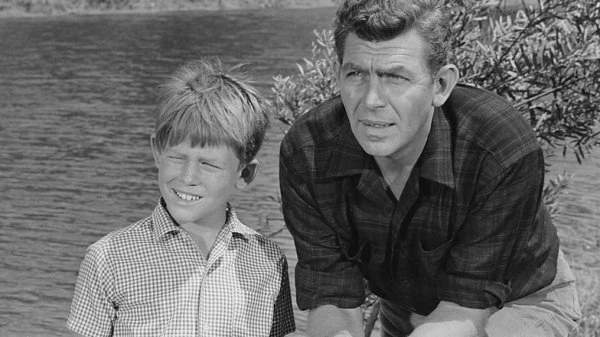
After an unsuccessful film (Angel in My Pocket) following his departure from the show, Andy Griffith returned to CBS in the fall of 1970, playing Andy Thompson in the drama-comedy The Headmaster, as the head of a private California high school. Though it dealt with then-topical issues as drug use and student protest, audiences could not accept Griffith in a different role. Several months later it was replaced with The New Andy Griffith Show with the star playing Andy Sawyer, who returns to his Southern hometown of Greenwood as mayor. Although Griffith was back in familiar territory, the new show could not compete with reruns of his old (and superior) show; the "New" show lasted five months. By 1986, Griffith found renewed television success in a new yet familiar role as easy-going Southern defence attorney Ben Matlock. Even former sidekick Don Knotts appeared occasionally on Matlock as nosy neighbour Les Calhoun. Knotts himself returned to series television in 1979, taking the role of not-so-swinging landlord Ralph Furley on the popular sitcom Three's Company. And Ronnie Howard--later Ron--avoided the jinx of many child actors by making the smooth transition from young Opie Taylor to teenager Richie Cunningham on Happy Days, and finally as one of the most successful film directors and producers in America.
The Andy Griffith Show was an excellent example of a show tailored to the unique talents of its star. Its decency and gentle good humour gave rural comedies a good name. No wonder Mayberry, North Carolina remains a fine place to visit.
Seen this show? How do you rate it?
Seen this show? How do you rate it?
Published on February 25th, 2023. Written by Mike Spadoni (2004) for Television Heaven.


